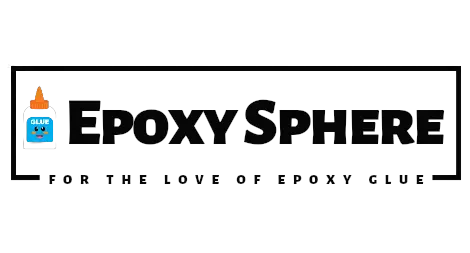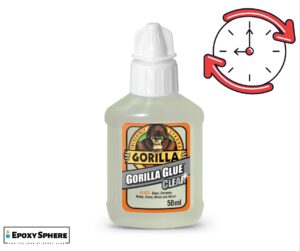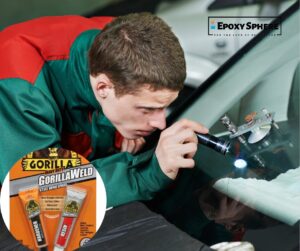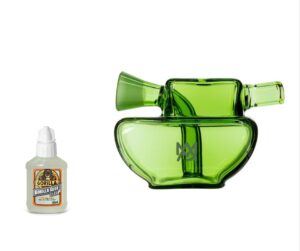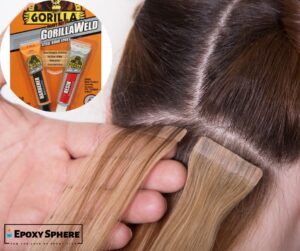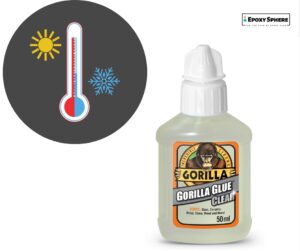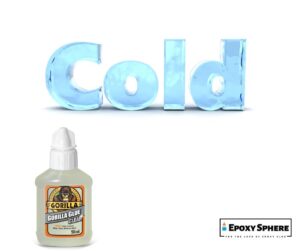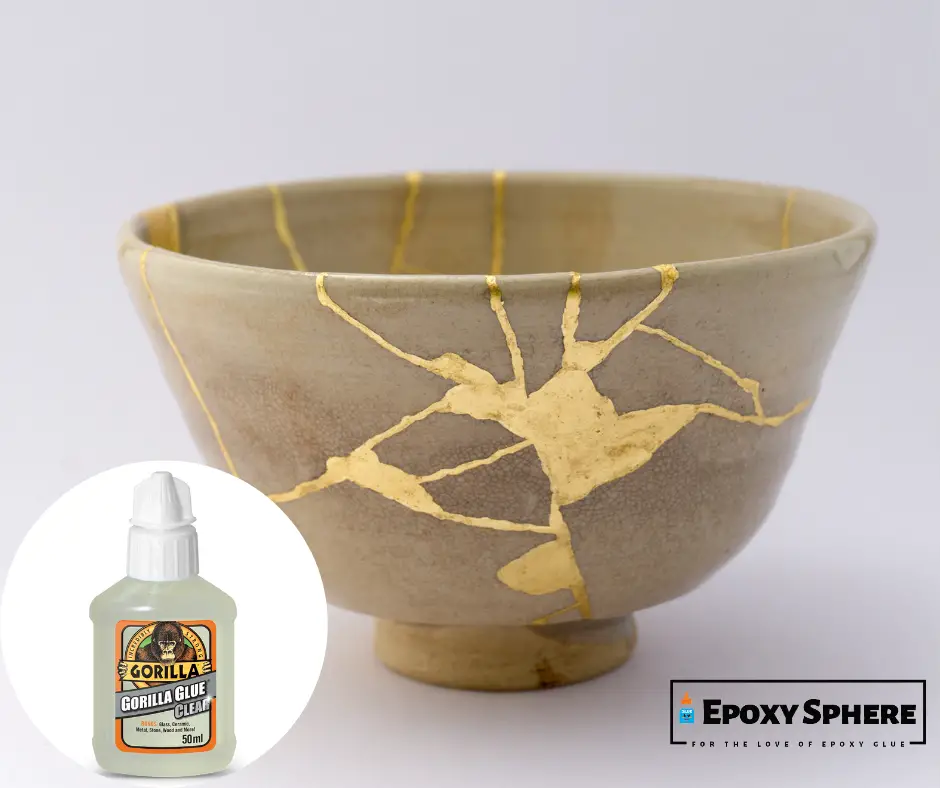
Gorilla glue has many uses, including fixing ceramic. It is a two-part epoxy made of rubber and resin that dries into a strong bond. So, does gorilla epoxy glue repair ceramic? Yes, you can use gorilla glue to repair ceramic if you carefully prepare the surface properly.
How Does Gorilla Glue Work?
Gorilla Epoxy is a two-part epoxy that requires mixing equal amounts from each tube. Epoxy glues are effective at porous bonding materials and non-porous surfaces such as ceramic tiles.
The bond is created when the liquid adhesive coats the glued surface and cures after it dries. It works best when applied to clean, dry surfaces; otherwise, it won’t form a strong bond.

Reasons Gorilla Epoxy Is Suitable For Ceramics
If you are wondering why gorilla glue is suitable for use in ceramics, here are a few reasons to convince you:
Easy to use
The Epoxy Glue is easy to use. The glue comes in two separate barrels of epoxy resin and hardener, which means it’s easy to control the amount of adhesive used. There’s no need to worry about getting too much or too little because you can easily dispense small amounts with the included syringe.
Dries clear
Gorilla Epoxy dries clear so that you can apply it to any color surface. This makes it ideal for clean, easy finishing. The epoxy will dry in five minutes or less and cure in 24 hours.
Gap filling abilities
When you’re fixing ceramics, you need glue with gap-filling abilities. That’s because broken ceramics will have parts chipped away and be uneven. Gorilla epoxy fills voids and bonds uneven surfaces so that your repair is seamless again.
In addition to its unique ability to fill gaps between your broken ceramic pieces, gorilla epoxy also provides a strong bond between them. This ensures your details hold together after application without cracking.
Water and heat resistant
Gorilla epoxy works well on ceramic since it is water-resistant. It can survive being exposed to water for short periods. In fact, gorilla epoxy glue is used in many places, such as bathroom tiles and kitchens, because you don’t have to worry about reacting with the water in these environments.
It can also withstand outdoor use, such as a garden border or fence post cap, while also handling dishwasher use. Again, gorilla epoxy glue is heat resistant and can withstand high temperatures up to 200 degrees Fahrenheit. And since it dries clear and hard, you’ll never have to worry about discoloration or bubbling when using this product in the sun.
Impressive bond strength
Bond strength is the amount of force required to break the bond between two surfaces. Bond strengths are affected by the adhesive and the surface being bonded. The more glue in contact with a material, the better it adheres to it. Thankfully, Gorilla Epoxy has a bond strength of around 3300 psi. If you apply 3300 pounds per square inch of force on both sides of its bond, it will not break.
Paintable
This epoxy is paintable, sendable, and sustainable. You can even paint over it with latex paint to match the color of your ceramic. It will hold up very well when applied correctly, so you don’t have to worry about ruining a valuable piece of art. Additionally, gorilla epoxy is sandable using a bit of fine-grit sandpaper.
How to Use Gorilla Epoxy for Fixing Ceramics
Now that you know that you can use gorilla glue on ceramics, it’s time to learn how to go about using it. If this is your first time handling Gorilla Epoxy, it’s best to conduct a trial run first to get a handle on how it works.
After this, you will also need a mixing tray, stir sticks, and your ceramic pieces. Once set, follow the steps below:
Prepare the surface of your ceramics
The ceramic surface must be clean and dry to ensure a good bond. Take a damp cloth and wipe the surface of your ceramics to remove any dust or dirt. If there are grease or oil stains on your ceramic, use acetone to remove them. Also, you can roughen up smooth surfaces to ensure the glue adheres to each surface properly.
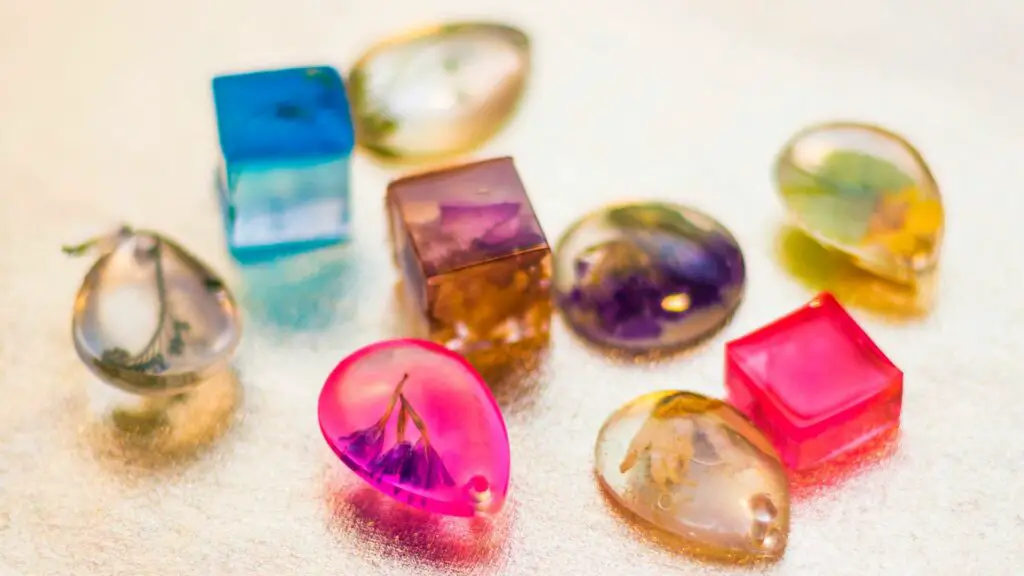
Mix your gorilla epoxy
Once your ceramic pieces are set, it’s time to mix your Gorilla Epoxy. The directions state that you must combine a part of resin and one part of hardener. Your gorilla epoxy comes with two syringes; you will need to remove the black cap from each syringe. Then proceed to cut or snap off the end of the tip of the syringes at a 45-degree angle.
Push the plunger on each tube until equal amounts are dispensed into a mixing cup or another disposable container. After this, mix both compounds for about 20 seconds until you get a uniform mixture using stir sticks.
Apply the mixture to your pieces
Now that you’ve mixed up the epoxy and your pieces are ready, it’s time to apply the mixture to your ceramic pieces. You can use a brush or a sponge; make sure to apply an even coat of glue over all surfaces of your ceramic. Keep in mind that your epoxy mixture will continue to thicken the longer you wait to use it. For this reason, it’s best to work fast and quickly.
Apply pressure by holding the pieces together
When using gorilla epoxy to repair ceramic, you will need to apply pressure by holding the pieces together.
You can hold the pieces together for a few minutes if you use them to bond two ceramic pieces. Alternatively, you can employ a clamp to help you hold your project together and undisturbed. This will allow it to reach maximum bond strength.
Is Gorilla Epoxy Food Safe?
Gorilla Epoxy is made from several chemical compounds that can adversely affect human health when ingested. And according to its manufacturers, gorilla epoxy is not recommended for direct or indirect food contact and should not be considered food safe. If you want to use it on food items like plates or bowls, please ensure they are labeled as “food safe” before using them. However, if you’re looking for a strong adhesive that will work well with ceramics, then you can rely on this epoxy.
Conclusion
If you’ve read this piece to this point, I’m sure you understand how to use gorilla epoxy for ceramic repair. As with any project, many factors need to be considered before starting. If you want your project to come out as well as possible, take the time to do it right.
Also, to work on your ceramic pieces, make sure that your epoxy is appropriate for your project. The right amount of glue should be applied in an even layer over both surfaces, so there’s no risk of things getting messy later on. Be careful not to use too much, or else excess material will drip from under your piece during setting.

Hi, This is John Davis. After years of working in the construction industry, I decided to create a website that would provide people with information about glue and its exceptional uses. I hope You find it useful
